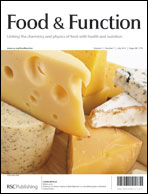Radioprotective effects of Zingiber officinale Roscoe (Ginger): past, present and future
Abstract
Radiation is an important modality in treating people with cancer especially when surgical intervention is impracticable or might debilitate the patient. However, effective use of ionizing radiation is compromised by the side effects that result from radiation-induced damage to normal tissue. The use of radioprotective compounds, which can selectively protect normal tissues against radiation injury is of immense use because in addition to association with protecting the normal tissue, it will also permits use of higher doses of radiation to obtain better cancer control and possible cure. However, till date no ideal radioprotectors are available as most synthetic compounds are toxic at their optimal concentrations. Plants commonly used as dietary and or therapeutic agents have recently been the focus of attention since in most cases they are non-toxic and are easily accepted for human use. Ginger, the rhizomes of Zingiber officinale Roscoe (Zingiberaceae), has widely been used as both culinary and medicinal agent. Preclinical studies carried out in the last decade has shown that ginger and its phytochemicals dehydrozingerone,


 Please wait while we load your content...
Please wait while we load your content...